 Your new post is loading...
 Your new post is loading...
Synthetic gene circuits take root
Complex spatial patterns of gene expression are engineered in plants to modulate root morphology
Adhesion molecules used to form multicellular patterns.
DeepMind says its AlphaFold tool has successfully predicted the structure of nearly all proteins known to science. The AI lab is offering its database of over 200 million proteins to anyone for free.
Instead of predicting the shapes of naturally occurring molecules, software designs original ones
To impart directionality to the motions of a molecular mechanism, one must overcome the random thermal forces that are ubiquitous on such small scales and in liquid solution at ambient temperature. In equilibrium without energy supply, directional motion cannot be sustained without violating the laws of thermodynamics. Under conditions away from thermodynamic equilibrium, directional motion may be achieved within the framework of Brownian ratchets, which are diffusive mechanisms that have broken inversion symmetry1–5. Ratcheting is thought to underpin the function of many natural biological motors, such as the F1F0-ATPase6–8, and it has been demonstrated experimentally in synthetic microscale systems (for example, to our knowledge, first in ref. 3) and also in artificial molecular motors created by organic chemical synthesis9–12. DNA nanotechnology13 has yielded a variety of nanoscale mechanisms, including pivots, hinges, crank sliders and rotary systems14–17, which can adopt different configurations, for example, triggered by strand-displacement reactions18,19 or by changing environmental parameters such as pH, ionic strength, temperature, external fields and by coupling their motions to those of natural motor proteins20–26. This previous work and considering low-Reynolds-number dynamics and inherent stochasticity27,28 led us to develop a nanoscale rotary motor built from DNA origami that is driven by ratcheting and whose mechanical capabilities approach those of biological motors such as F1F0-ATPase. A nanoscale rotary motor made of DNA origami, driven by ratcheting and powered by an external electric field, shows the ability to wind up a spring and has mechanical capabilities approaching those of biological motors.
The α-helix is pre-eminent in structural biology1 and widely exploited in protein folding2, design3 and engineering4. Although other helical peptide conformations do exist near to the α-helical region of conformational space—namely, 310-helices and π-helices5—these occur much less frequently in protein structures. Less favourable internal energies and reduced tendencies to pack into higher-order structures mean that 310-helices rarely exceed six residues in length in natural proteins, and that they tend not to form normal supersecondary, tertiary or quaternary interactions. Here we show that despite their absence in nature, synthetic peptide assemblies can be built from 310-helices. We report the rational design, solution-phase characterization and an X-ray crystal structure for water-soluble bundles of 310-helices with consolidated hydrophobic cores. The design uses six-residue repeats informed by analysing 310-helical conformations in known protein structures, and incorporates α-aminoisobutyric acid residues. Design iterations reveal a tipping point between α-helical and 310-helical folding, and identify features required for stabilizing assemblies of 310-helices. This work provides principles and rules to open opportunities for designing into this hitherto unexplored region of protein-structure space. A study demonstrates the rational de novo design of water-soluble assemblies constructed from long 310-helical peptides, and details their characterization by circular dichroism spectroscopy, analytical ultracentrifugation and X-ray crystallography.
Computational Protein Design has the potential to contribute to major advances in enzyme technology, vaccine design, receptor-ligand engineering, biomaterials, nanosensors, and synthetic biology. Although Protein Design is a challenging problem, proteins can be designed by experts in Protein Design, …
A protein roadblock forms when a protein binds DNA and hinders translocation of other DNA binding proteins. These roadblocks can have significant effects on gene expression and regulation as well as DNA binding. Experimental methods for studying the effects of such roadblocks often target endogenous sites or introduce non-variable specific sites into DNAs to create binding sites for artificially introduced protein roadblocks. In this work, we describe a method to create programmable roadblocks using dCas9, a cleavage deficient mutant of the CRISPR effector nuclease Cas9. The programmability allows us to custom design target sites in a synthetic gene intended for in vitro studies. These target sites can be coded with multivalency—in our case, internal restriction sites which can be used in validation studies to verify complete binding of the roadblock. We provide full protocols and sequences and demonstrate how to use the internal restriction sites to verify complete binding of the roadblock. We also provide example results of the effect of DNA roadblocks on the translocation of the restriction endonuclease NdeI, which searches for its cognate site using one dimensional diffusion along DNA.
A prototypical biocomposite block comprising a blend of bacteria, fungi and feedstock can be assembled into human-sized, living structures with self-healing and environmental sensing capabilities.
Genetic networks mimic electronic circuits to perform a range of logic functions. Equipped with a series of eight small test tubes, the device glows green when it detects a contaminant. The number of tubes that glow depend upon how much contamination is present. If only one tube glows, then the w
Through synthetic biology, scientists can add novel functions to cells, such as the ability to produce new materials or detect and respond in specific ways to diseases. Though the applications are exciting, the process suffers from some inefficiencies—one of which Stanford University chemical engineer Xiaojing Gao is working to avoid.
|
Multicellular systems, from bacterial biofilms to human organs, form interfaces (or boundaries) between different cell collectives to spatially organize versatile functions1,2. The evolution of sufficiently descriptive genetic toolkits probably triggered the explosion of complex multicellular life and patterning3,4. Synthetic biology aims to engineer multicellular systems for practical applications and to serve as a build-to-understand methodology for natural systems5–8. However, our ability to engineer multicellular interface patterns2,9 is still very limited, as synthetic cell–cell adhesion toolkits and suitable patterning algorithms are underdeveloped5,7,10–13. Here we introduce a synthetic cell–cell adhesin logic with swarming bacteria and establish the precise engineering, predictive modelling and algorithmic programming of multicellular interface patterns. We demonstrate interface generation through a swarming adhesion mechanism, quantitative control over interface geometry and adhesion-mediated analogues of developmental organizers and morphogen fields. Using tiling and four-colour-mapping concepts, we identify algorithms for creating universal target patterns. This synthetic 4-bit adhesion logic advances practical applications such as human-readable molecular diagnostics, spatial fluid control on biological surfaces and programmable self-growing materials5–8,14. Notably, a minimal set of just four adhesins represents 4 bits of information that suffice to program universal tessellation patterns, implying a low critical threshold for the evolution and engineering of complex multicellular systems3,5. A synthetic cell-cell adhesion logic using swarming E. coli with 4 bits of information is introduced, enabling the programming of interfaces that combine to form universal tessellation patterns over a large scale.
Genomically minimal cells, such as JCVI-syn3.0 and JCVI-syn3A, offer an empowering framework to study relationships between genotype and phenotype. With a polygenic basis, the fundamental physiological process of cell division depends on multiple genes of known and unknown function in JCVI-syn3A. A …
A molecular rotary ratchet motor.
Cell biology; Stem cells research; Bioinformatics.
Synthetic biology research and its industrial applications rely on deterministic spatiotemporal control of gene expression. Recently, electrochemical control of gene expression has been demonstrated in electrogenetic sys- tems (redox-responsive promoters used alongside redox inducers and electrodes), allowing for the direct inte- gration of electronics with biological processes. However, the use of electrogenetic systems is limited by poor activity, tunability, and standardization. In this work, we developed a strong, unidirectional, redox-responsive promoter before deriving a mutant promoter library with a spectrum of strengths. We constructed genetic circuits with these parts and demonstrated their activation by multiple classes of redox molecules. Last, we demonstrated electrochemical activation of gene expression under aerobic conditions using a novel, modular bioelectro- chemical device. These genetic and electrochemical tools facilitate the design and improve the performance of electrogenetic systems. Furthermore, the genetic design strategies used can be applied to other redox-responsive promoters to further expand the available tools for electrogenetics. https://www.science.org/doi/pdf/10.1126/sciadv.abm5091
Self-organized collective cell behaviors as design principles for synthetic developmental biology
Over the past two decades, molecular cell biology has graduated from a mostly analytic science to one with substantial synthetic capability. This success is built on a deep understanding of the structure and function of biomolecules and molecular mechanisms. For synthetic biology to achieve similar success at the scale of tissues and organs, an equally deep understanding of the principles of development is required. Here, we review some of the central concepts and recent progress in tissue patterning, morphogenesis and collective cell migration and discuss their value for synthetic developmental biology, emphasizing in particular the power of (guided) self-organization and the role of theoretical advances in making developmental insights applicable in synthesis.
Protein-protein interactions (PPIs) govern numerous cellular functions in terms of signaling, transport, defense and many others. Designing novel PPIs poses a fundamental challenge to our understanding of molecular interactions. The capability to robustly engineer PPIs has immense potential for the …
A computational and experimental strategy was developed to redesign biosynthetic gene
clusters into synthetic genetic elements that can be expressed across a wide range
of prokaryote and eukaryote hosts, expanding our ability to discover and characterize
a variety of natural products and biosynthetic pathways.
Mammalian cells were engineered with both a plant hormone system, which provides a
diffusive communication channel, and robust synthetic signaling pathways that allow
for population sensing and control through auxin.
|
 Your new post is loading...
Your new post is loading...
 Your new post is loading...
Your new post is loading...






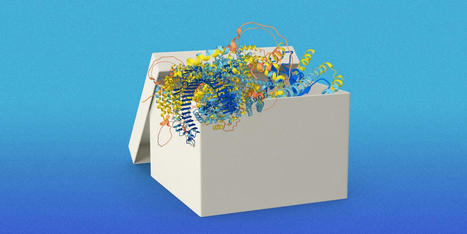
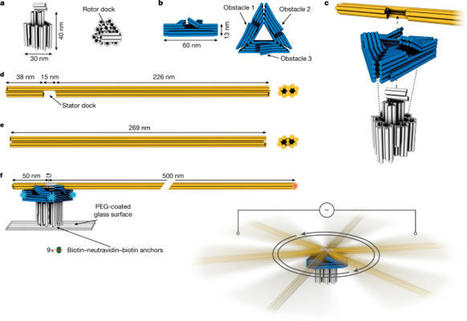

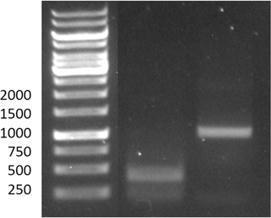
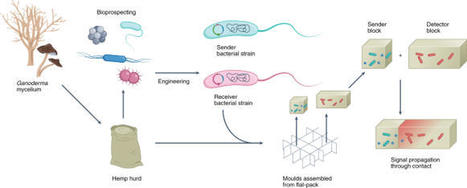
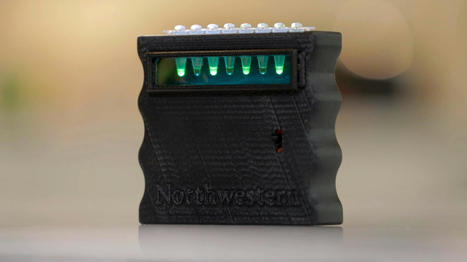
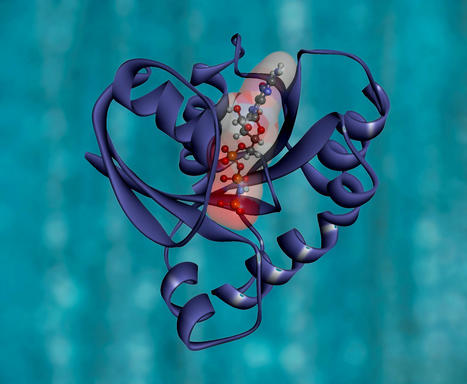










A long-standing aim of synthetic biology has been to engineer genetic circuits that are able to confer prescribed spatiotemporal patterns of gene expression. This feat would not only unlock the next tier in the technology tree of translational biology but would also constitute a powerful demonstration of a predictive and quantitative basic understanding of genetic regulation in higher eukaryotes. On page 747 of this issue, Brophy et al. (1) report a strategy to engineer spatial transcriptional patterns in the root of the model plant Arabidopsis thaliana to alter its morphology. This effort constitutes a milestone in the genetic engineering of a whole, fully developed multicellular organism and points to the challenges ahead.
https://www.science.org/doi/10.1126/science.add6805#body-ref-R1